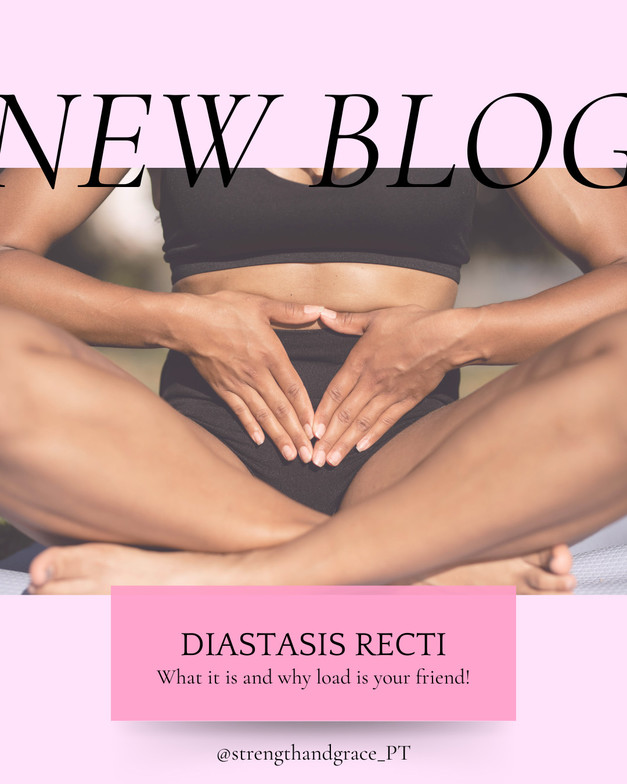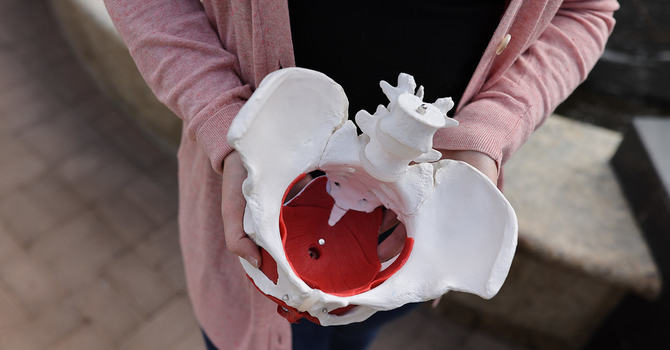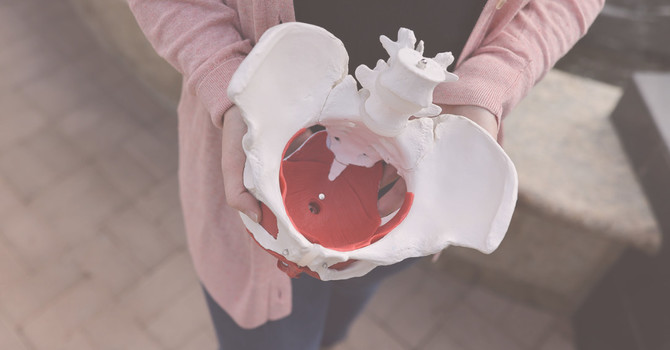
If you’re postpartum and noticing a soft spot or bulge along your abdominal midline, you might be hearing the term diastasis recti. And if you’ve also heard that you need to avoid core exercises to “protect your gap,” I want to gently shift that narrative.
As a pelvic floor physical therapist and owner of Strength & Grace Physical Therapy and Wellness in Goodyear, Arizona, I work with many postpartum clients who are unsure how to move, exercise, or feel confident in their bodies again.
Let’s get one thing clear right away:
Diastasis recti is a normal and expected adaptation in pregnancy.
Nothing is torn. Your abdominal muscles haven’t separated in a harmful way.
You don’t need to fear movement or avoid using your core.
With the right approach, loading your core muscles is one of the most effective ways to support healing and regain strength—and I’m here to walk you through how and why.
What Diastasis Recti Actually Is (and Isn’t)
During pregnancy, your body makes space for your growing baby by allowing the linea alba—the connective tissue between the left and right sides of your abdominal wall—to stretch. This natural and necessary widening is what we call diastasis recti abdominis (DRA).
It’s a normal physiological response, not an injury. In many cases, the abdominal wall regains its natural tension after birth on its own. But for some people, especially those with lingering core or pelvic floor symptoms, targeted rehabilitation can help guide that recovery and restore full function.
Why Strengthening (Not Avoiding) the Core Helps You Heal
1. Research Shows Exercise Can Improve Diastasis
A 2023 meta-analysis of 12 clinical trials found that structured core training significantly reduced the inter‑recti distance (IRD) in postpartum individuals. It also improved muscular strength and balance, supporting the idea that intentional movement makes a difference in healing and long-term recovery (TCSurg, 2023).
A separate systematic review came to a similar conclusion—abdominal and pelvic floor training can reduce IRD and improve the coordination and function of the abdominal wall (Benjamin et al., 2021).
2. Activating the Deep Core Restores Function and Support
Much of my work focuses on retraining the transversus abdominis (TrA), a deep core muscle that wraps around the abdomen like a corset. One study found that a postpartum strengthening program centered on the TrA led to reduced abdominal stretching, improved core function, and even fewer urinary symptoms—all without relying on traditional crunches (Reich et al., 2021).
3. Gentle Loading Helps Connective Tissue Regain Tension
Connective tissue like the linea alba responds to gentle, consistent loading. That means smart, progressive core work helps the abdominal wall become more resilient and supportive again. Research supports the idea that tissue remodeling is stimulated by load—and that includes the tissues involved in diastasis (Hu et al., 2019).
4. You Don’t Have to Avoid All Crunches Forever
With proper progression and attention to form, some curl-up style movements can actually support healing. A 2023 study showed that postpartum individuals with diastasis recti who performed a controlled 12-week core program—including curl-ups—improved their abdominal strength without worsening the condition (Stær-Jensen et al., 2023).
In my practice, I only introduce these types of exercises when your core is ready, and always with proper breathing and pressure management.
What Diastasis Rehab Looks Like at Strength & Grace PT and Wellness
Every postpartum body is different, and so is every recovery plan. In my clinic, I guide clients through a thoughtful progression that typically begins with foundational work like diaphragmatic breathing, transversus abdominis (TrA) activation, and pelvic floor engagement.
As your coordination improves, we begin building stability and control through exercises such as lean back, dead bugs, glute bridges, and modified side planks. From there, I introduce resistance training and progressive loading using movements like wall sits, bird-dogs, and standing banded core work. When appropriate, we progress to functional strength exercises such as modified curl-ups, squats, and resistance-based full-body movements designed to help you return to whatever activities matter most to you.
Throughout the process, I closely monitor how your body responds—particularly watching for signs like doming, coning, or breath-holding—to make sure your movement is both safe and effective.
Serving Postpartum Clients in Goodyear, Litchfield Park, Avondale & Beyond
If you're searching for diastasis recti treatment in Goodyear, AZ, or want personalized support in your postpartum recovery, I’d love to help. Whether you're six weeks postpartum or six years out and still feeling disconnected from your core, it's never too late to rebuild strength, function, and confidence.
At Strength & Grace PT and Wellness, you’ll receive:
-
One-on-one care with a licensed pelvic floor physical therapist (that’s me)
-
A plan tailored to your goals—whether that’s lifting your toddler, returning to the gym, or simply moving without discomfort
-
Compassionate, evidence-based support without fear or pressure
Final Thoughts
Your body adapted beautifully to support pregnancy. Diastasis recti is simply one of the ways it made space—and with guidance and consistency, your core can absolutely recover.
You don’t need to avoid movement. You don’t need to “close the gap” to be strong.
You just need the right kind of support, at the right time.
If you’re ready to begin or just have questions, reach out—I’d love to be part of your healing journey.
References
Strength & Grace Physical Therapy and Wellness
Pelvic Floor Physical Therapy in Goodyear, AZ
Serving Litchfield Park, Avondale, Buckeye, and surrounding West Valley communities

Lauren Cairo
Contact Me

.jpg)

